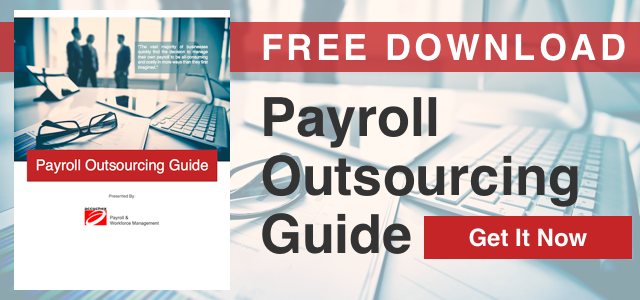 Your onboarding process for new hires presents both great opportunities and potential disasters. Being aware of best practices and what to avoid is essential for an optimal onboarding process.
Your onboarding process for new hires presents both great opportunities and potential disasters. Being aware of best practices and what to avoid is essential for an optimal onboarding process. In this post we present seven of the most common mistakes made by management when bringing new employees into the fold. For too many companies the entire process is often left to one or maybe two of their staff members and is quite unstructured.
But this approach is fraught with danger that not only greatly diminishes the experience for the new employee, but sets the stage for potential issues down the road. But because this is a process that is too often seen as nothing more than a series of forms to filled out for the HR department, it is a process that is either grossly disregarded or badly managed, at best.
Seven Common Onboarding Mistakes - And How To Avoid Them
The ideal onboarding process actually begins before a new employee is even hired. In other words, one of the fundamental elements of a successful onboarding process is having the right employee coming on board!
Common mistakes employers often make include:
1. Not having a structured and documented recruiting and hiring process.
This might seem elementary and even obvious. Yet, the fact is that many businesses are lacking in this operational area. The unfortunate result is that far too many new hires are already a poor fit for the position they were hired for, or a poor fit for the culture and values of the company that has hired them.
Common hiring mistakes include hiring friends or family, hiring on initial impressions, and hiring strictly based on alleged skill sets. A comprehensive recruiting, interviewing and screening, and hiring process will minimize the prospects of poor hires and maximize the potential for finding and keeping superb employees.
2. Not fully vetting candidates through background checks and/or testing.
This mistake falls under the previous category of recruiting and hiring errors. Conducting extensive background checks and making use of established skill tests and personality tests should be considered a mandatory step in your hiring process.
For example, one of the most popular personality evaluations, the Meyers-Briggs test, determines whether the candidates has tendencies toward extroversion or introversion, sensing or intuition, thinking or feeling, and judging or perceiving. This test, as well as others like it, can make an essential difference between a good hire and potential HR disaster.
3. Not having a structured and documented onboarding process.
Similar to the absence of an established recruiting and hiring process, the lack of a structured and documented process for onboarding new hires is the most common mistake employers make. Without a strategic plan for successfully assimilating and integrating your new staff member, the process will be arbitrary, haphazard and incomplete.
With a documented procedure every manager and employee involved in this critical process will be able to conduct the process the same way each time, every time, with the same results. In addition, having a consistent and documented approach will allow an organization to monitor and improve the process over time.
4. Failing to introduce and include the employee's new co-workers.
This falls under the category of simple neglect. While it might seem to be an obvious set of actions, many new hires find themselves having to navigate their own way among their new colleagues. And failing to include fellow co-workers in the onboarding process can reinforce an unintended atmosphere of isolation.
Effective onboarding focuses on the concerns and comfort of the new hire. This is a critical period where a business can take measures to show themselves as thoughtful and human. New hires are people, and as such they need to feel welcome and included.
5. Providing insufficient or incomplete information.
Communication is often a challenge for most businesses, and it is often most evident in the onboarding process. New hires need a great deal of information, but too many managers provide only what they feel is necessary for the moment leaving the new employee ill equipped to move forward confidently.
New employees should be thoroughly familiarized with not only their job functions, but with the layout of the workplace, relevant company wide functions, and even where and when people eat, or socialize as co-workers. Better to err on the side of too much information than to unintentionally deprive a new staff member of critical knowledge.
6. Failing to intentionally assimilate the new hire into the company culture.
This task, if considered at all, is usually assumed to be the natural function of the new hire and his or her new co-workers. However, the challenge of navigating an unknown environment combined with the normal stress of working a new job can be overwhelming.
In addition, depending on the tenor of your company's culture, much of the initial assimilation provided by fellow employees may consist largely of gossip and uninformed opinion. Preparing for intentionally assimiliating a new employee into your company's culture requires knowing what that culture is. Focusing on your company's shared values and ideals is a great place to start.
7. Providing little or no follow-up after completing the initial onboarding process.
Finally, it is essential to understand that the onboarding process does not end after "week two", or "week three", or even after the first month. Studies have shown that a large proportion of staff turnover happen within the first 45 days. According to one survey, businesses reported that their onboarding programs lasted anywhere from less than a week, to six months or longer. While over 50 percent felt their onboarding was done in less than a month, 46 percent took two to six months for their program.
This means that a structured process for eliciting feedback from new hires is critical. Communicating with your new employee about their onboarding experience doesn't end once they're "up to speed". Feedback is essential for assessing your own onboarding efforts and communicating is essential for the successful transition of the employee.
Your onboarding process is a vital investment of your time and resources with an essential ROI
It's not too late to begin making adjustments or improvements to your current process. In fact, the new year could be a perfect time to review your recruiting and hiring processes with the goal of upgrading and optimizing them before looking for your new hires for 2015!
In addition to a growing and demanding role in recruiting, hiring, and continually training employees, the HR staff is responsible for other functions they are typically tasked with such as payroll management, tax filings, employee records compliance, and so forth.
Considering alternatives such as outsourcing is increasingly becoming a cost-effective and strategic option. Accuchex can help you in managing your HR needs, payroll processes, and staying on top of compliance demands. Get your Free Download: Payroll Outsourcing Guide to help you make an informed decision or call Accuchex Payroll Management Services at 877-422-2824.


